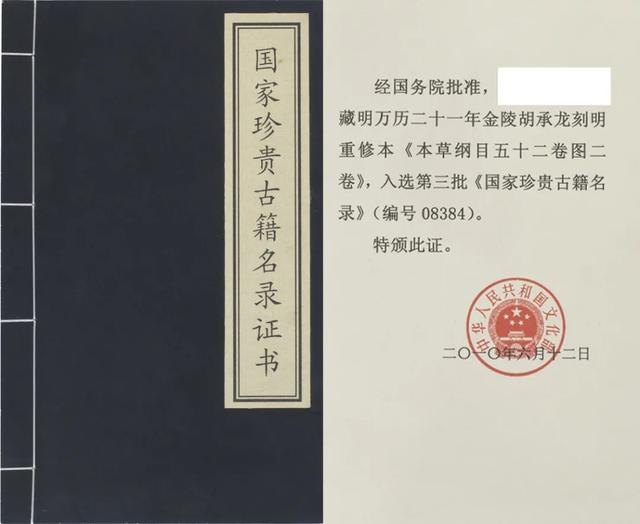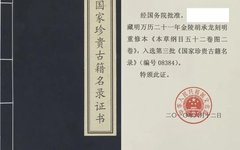Issue No. 1784
In May 2011, the Huangdi Neijing (Yellow Emperor’s Inner Canon) from the Yuan Gu Lin Shu Tang edition and the Ming Dynasty edition of the Compendium of Materia Medica (Bencao Gangmu) by Hu Chenglong, housed in the library of the China Academy of Chinese Medical Sciences, were selected for the UNESCO Memory of the World Register. On June 1, 2011, the National Administration of Traditional Chinese Medicine and the National Archives held a press conference in the first-floor press hall of the National Administration of Traditional Chinese Medicine to announce the inclusion of the Compendium of Materia Medica and the Huangdi Neijing in the Memory of the World Register. Wang Guoqiang, then Deputy Minister of Health and Director of the National Administration of Traditional Chinese Medicine, and Li Minghua, Deputy Director of the National Archives, introduced the significance of the inclusion of these works in the Memory of the World Register and the UNESCO Memory of the World Programme, and answered questions from the media. This marked an important achievement in the protection of Chinese traditional medicine literature as part of the global heritage, and it is a significant event in the process of traditional Chinese medicine entering the world stage, with far-reaching implications.

To the average person, the Compendium of Materia Medica is a monumental medical work, and most people know that it was authored by Li Shizhen, but few are aware of its connection to Nanjing (historically known as Jinling). In fact, Nanjing was the first place where it was printed and published. One could even say that Nanjing made the Compendium of Materia Medica a success, saving it from being lost to history. Currently, there are three complete editions of the Jinling version of the Compendium of Materia Medica in existence; two are officially housed in the China Academy of Chinese Medical Sciences and the Shanghai Library, while another was discovered in 2008 deep in the Funiu Mountains of Henan Province. This folk version is the only circulating complete Jinling edition of the Compendium of Materia Medica, the only one retaining the copyright page of the Jinling edition, and the only one with a clear printing date. It is also the most complete and well-preserved version among all Jinling editions, having been revised by the Zhi Jin Tang at the end of the Ming Dynasty, and was recognized as the authentic version by the state, being included in the National Precious Ancient Books Directory in 2013. The existing collections of Jinling editions of the Compendium of Materia Medica all exhibit varying degrees of reprints, corrections, and missing pages, all of which were reprinted after the 21st year of the Wanli era (1593). The illustrations in the Jinling edition particularly reflect Li Shizhen’s meticulousness in his

